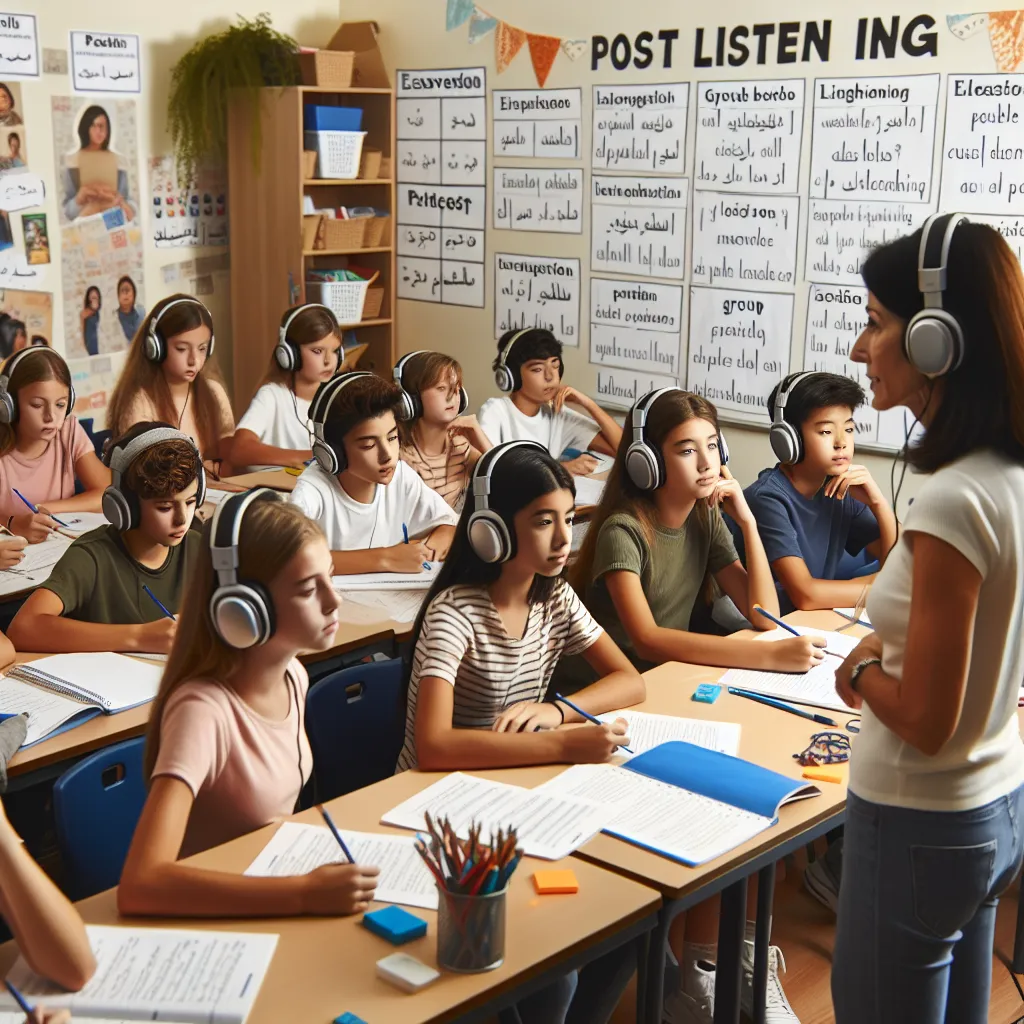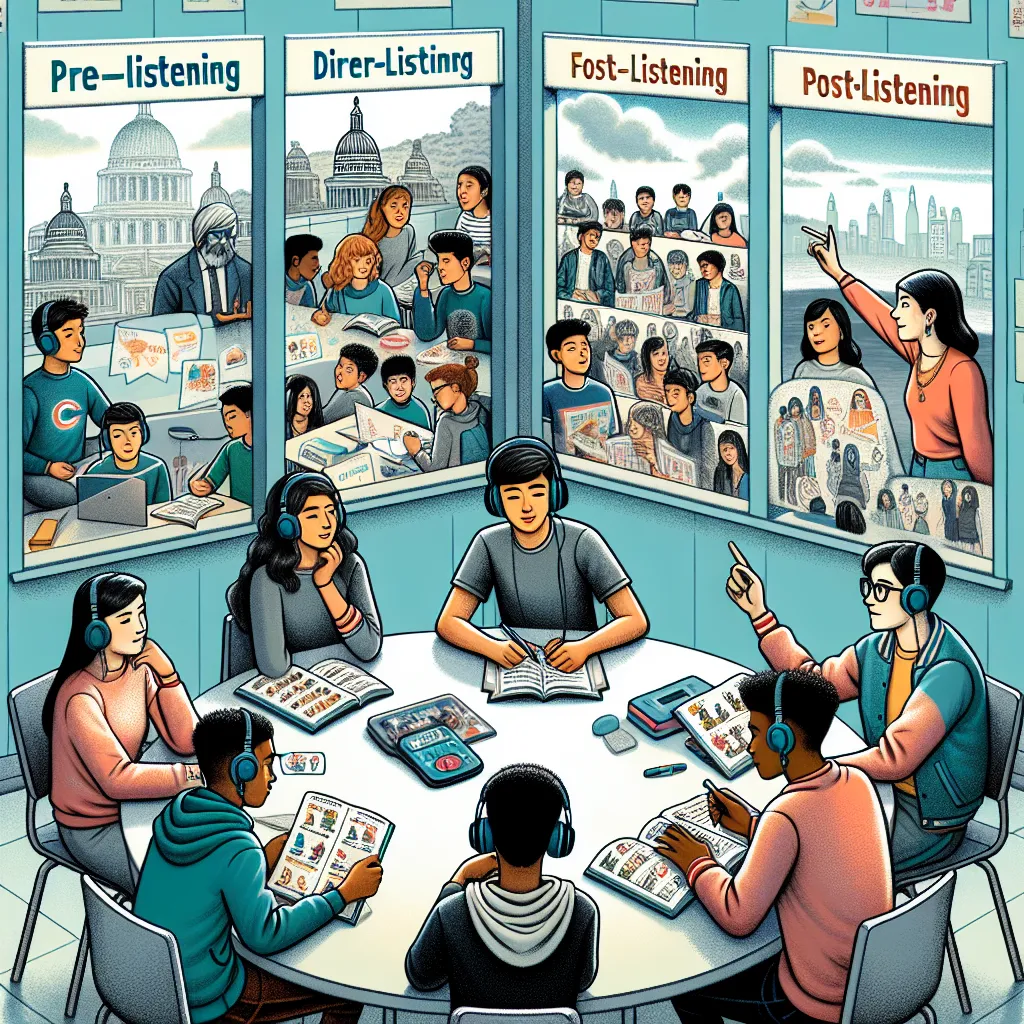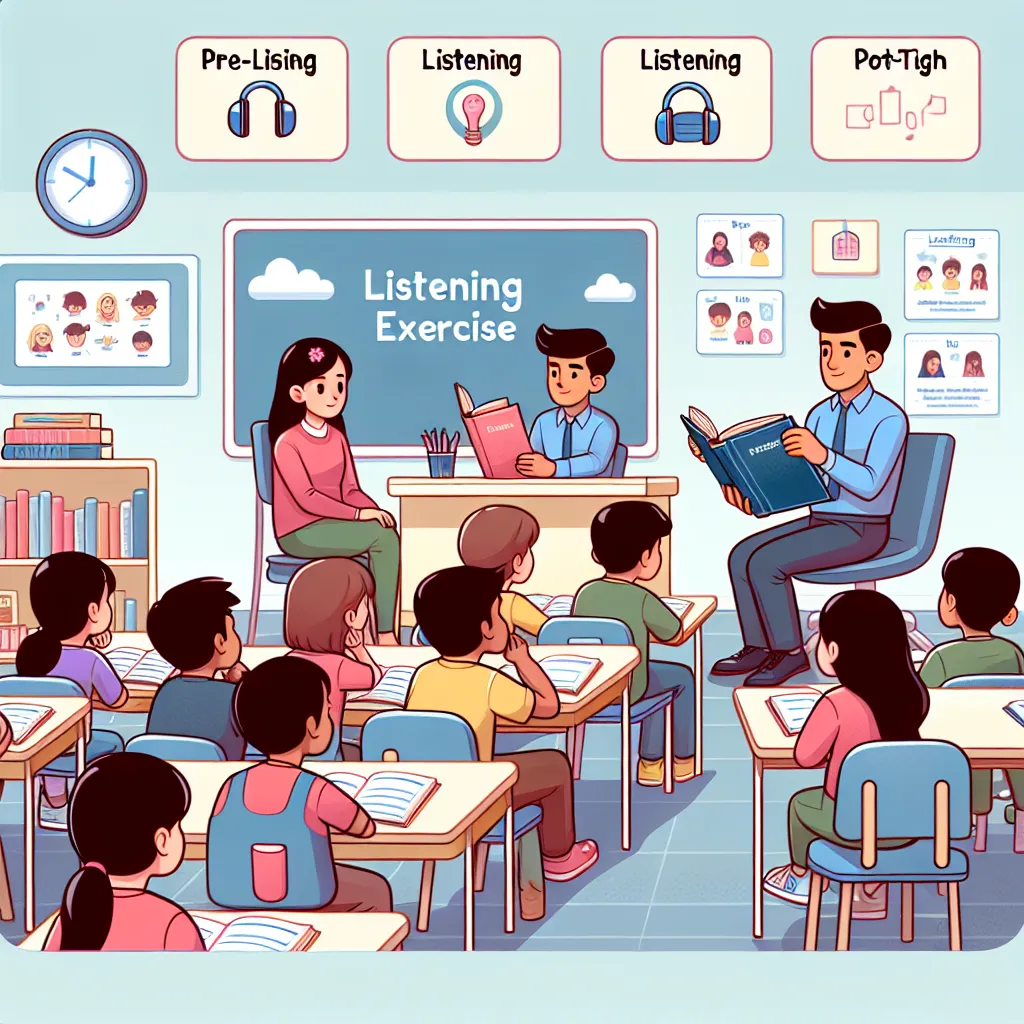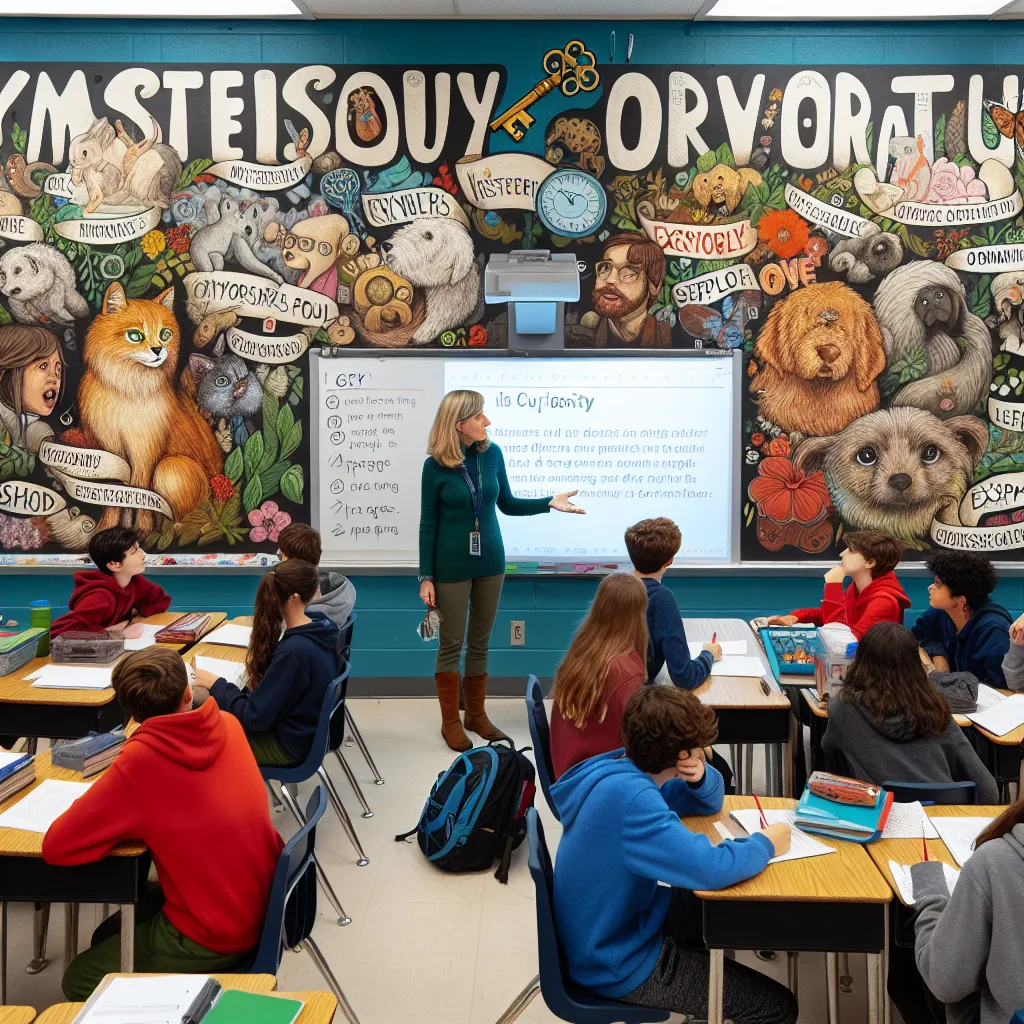Ask AI on The Internet
Question: Listening is a foundational skill in the process of learning any language. In an essay, explain how you would teach listening to a grade 7. In your discussion, include: 1. Develop post-listening activities and assessments that will allow students to process and reflect on the material.
Teaching listening skills to grade 7 students is an essential component in language learning, as it not only helps students to understand spoken language but also supports the development of other language skills, such as speaking, reading, and writing. Here is a structured approach to teaching listening, including post-listening activities and assessments: ### Introduction to Listening Skills 1. **Understanding the Importance**: Start by explaining to students why listening is an important skill in language learning. Discuss how good listening can improve their understanding, communication, and even empathy towards others. 2. **Setting Goals**: Clearly define the goals of listening exercises. For example, you might aim for students to: - Recognize different accents and intonations. - Identify key points and main ideas. - Follow instructions and directions. - Understand and interpret the context and emotions behind the spoken words. ### Pre-Listening Activities 1. **Build Context**: Provide background information about the listening material. If it’s an audio clip or a story, discuss the topic briefly to activate prior knowledge and build context. 2. **Vocabulary Preparation**: Introduce and explain new vocabulary that will be in the listening material. This can help reduce anxiety and increase understanding. 3. **Setting a Purpose**: Set specific listening tasks or questions to give students a focus. For example, ask them to note down three main ideas or to listen for specific information. ### During Listening Activities 1. **First Listening**: Play the audio or read the material aloud without interruptions. The first listening should be about getting the general idea. 2. **Second Listening**: Play the audio again, this time allowing students to take notes or answer the specific questions you provided earlier. Encourage them to listen for details. 3. **Third Listening**: If necessary, allow a third listening session to fill in any gaps and clarify misunderstandings. ### Post-Listening Activities and Assessments 1. **Discussion and Reflection**: - **Group Discussion**: Allow students to discuss their answers and thoughts in small groups or as a whole class. This helps them to process the material and learn from each other. - **Personal Reflection**: Have students write a brief reflection on what they found challenging or interesting about the listening exercise. This helps to internalize the experience. 2. **Answering Comprehension Questions**: Prepare a variety of questions that cover different levels of understanding: - **Literal Questions**: These questions require students to recall specific information from the listening. - **Inferential Questions**: These questions encourage students to make inferences and read between the lines. - **Critical Questions**: These questions ask students to evaluate the material and express their own opinions. 3. **Summarizing**: Ask students to summarize the main points of the listening material in their own words. This activity reinforces comprehension and synthesis skills. 4. **Role-Playing and Reenactment**: For more interactive practice, you can have students reenact scenarios from the listening material. This encourages deeper understanding and helps students practice speaking and listening in a practical context. 5. **Creative Activities**: - **Drawing or Storyboarding**: Have students draw scenes or create a storyboard based on the listening material. This can be especially useful for visual learners. - **Writing**: Ask students to write a continuation, a different ending, or a diary entry from the perspective of a character in the listening material. 6. **Listening Journals**: Maintain a listening journal where students can regularly reflect on their listening activities, track their progress, and set personal goals for improvement. 7. **Assessment and Feedback**: - **Quizzes and Tests**: Periodically assess listening comprehension through quizzes and tests that include multiple-choice questions, short answers, and essay questions. - **Self-Assessment**: Encourage students to assess their own listening skills and set goals for improvement. - **Teacher Feedback**: Provide individualized feedback highlighting strengths and areas for improvement. By incorporating these structured pre-listening, during-listening, and post-listening activities, you can create a comprehensive learning environment that helps grade 7 students improve their listening skills in an engaging and effective manner. Post-listening activities and assessments are crucial in allowing students to process, reflect on, and deepen their understanding of the material, ensuring a well-rounded language learning experience.
Think your answer is better than the AI's? Post it below.
Question Tags
If you want your question answered by an AI, click here.







Post your own comment: